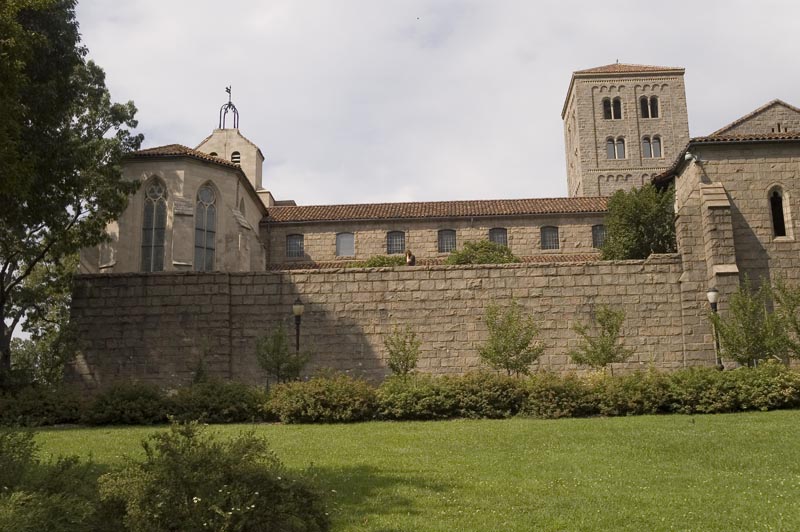
20060708

A view of the Cloisters compound from the south side.
All photos copyright (C) Bill Caid 2006
One of the advantages of living in Manhattan is that it is the centroid of the art and culture universe here in the US. We saw the cloisters on one of the toursist maps and elected to go there not knowing what it was. But, we did understand that it was a tour-de-force with respect to the subway. We went from lower Manhattan to 190th street in one hop. The photos below are what we saw.
To put the Cloisters into context, the following is an excerpt from the Metropolitan Museum's web page on the Cloisters:
The Cloisters, which celebrated its sixtieth anniversary in 1998, is named for the portions of five medieval French cloisters—Saint-Michel-de-Cuxa, Saint-Guilhem-le-Désert, Bonnefont-en-Comminges, Trie-en-Bigorre, and Froville—that were incorporated into the modern museum building. The result is not a copy of any particular medieval structure but an ensemble of spaces, rooms, and gardens that provide a harmonious and evocative setting in which visitors can experience the rich tradition of medieval artistic production. Just as cloisters provided sheltered access from one building to another within a monastery, here they act as passageways from gallery to gallery. They provide as inviting a place for rest, contemplation, and conversation as they did for their original monastic population.
Much of the sculpture at The Cloisters was acquired by George Grey Barnard (1863–1938), a prominent American sculptor and avid collector of medieval art. While working in rural France before World War I, Barnard supplemented his income by locating and selling medieval sculpture and architectural fragments that had made their way into the hands of local landowners over several centuries of political and religious upheaval. He kept many pieces for himself and, upon returning to the United States, opened to the public a churchlike brick structure on Fort Washington Avenue filled with his collection—the first installation of medieval art of its kind in America.
Through the generosity of the philanthropist and collector John D. Rockefeller, Jr. (1874–1960), the museum and all of its contents were acquired by the Museum in 1925. By 1927, it was clear that a new, larger building would be needed to display the collection in a more scholarly fashion. In addition to financing the conversion of 66.5 acres of land just north of Barnard's museum into a public park—inside which the new museum building would be located—and donating seven hundred acres of additional land to the state of New Jersey across the Hudson River to ensure that the view from The Cloisters remain unsullied, Rockefeller contributed medieval works of art from his own collection (including the celebrated set of seven South Netherlandish tapestries depicting "The Hunt of the Unicorn") and established an endowment for operations and future acquisitions.
The place exceeded my expectations, but I am not very art literate.
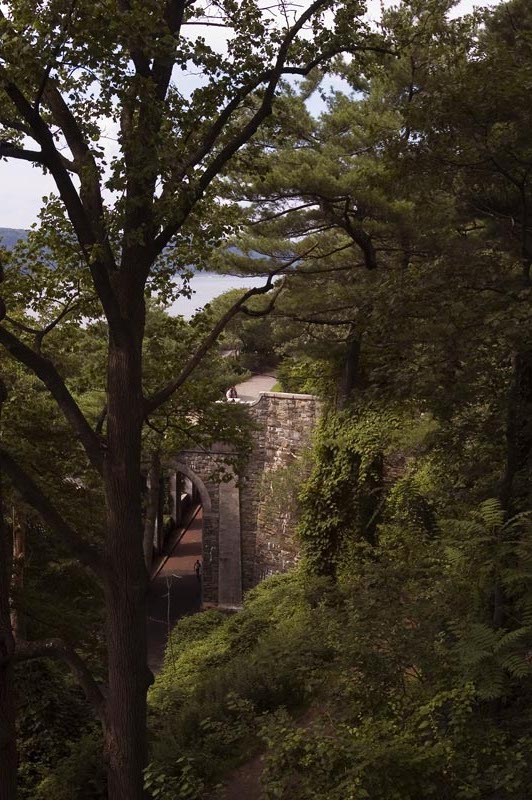
The Cloisters is in Fort Tyron Park and has commanding views of the Hudson River.

The Vanna White impression. Either that or she is exasperated with the hike.
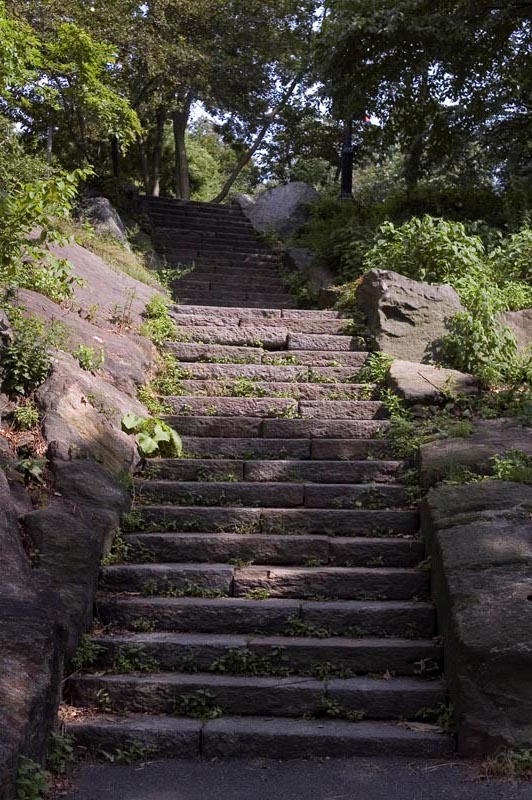
The park is cut into the cliff rocks. These stairs are steep.
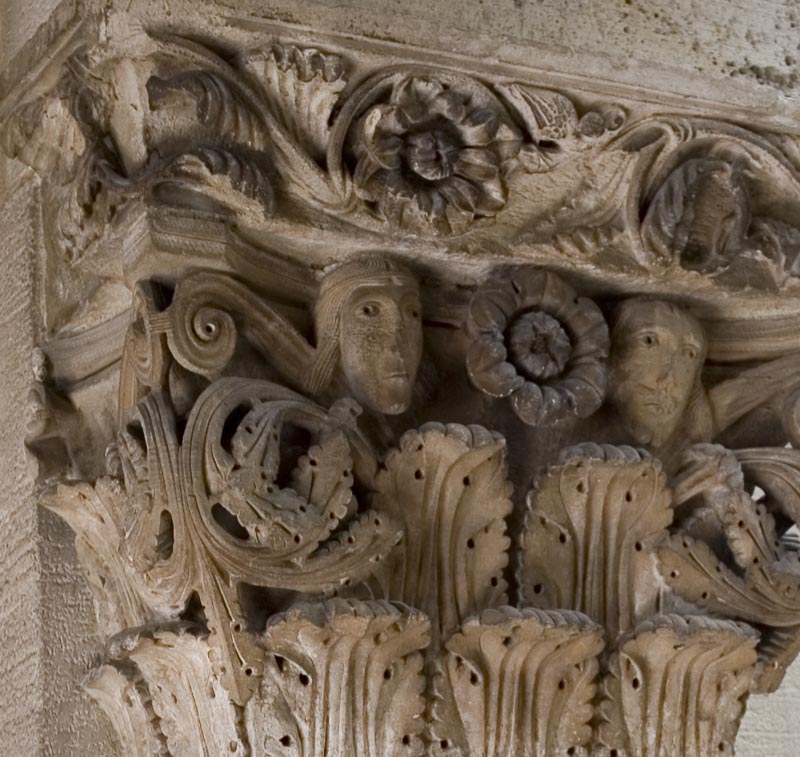
Inside, we were able to see and photograph some of the works of art they had there. Here is a column that was imported as part of the construction of the museum. Note the intricate details in the carving. Very impressive.
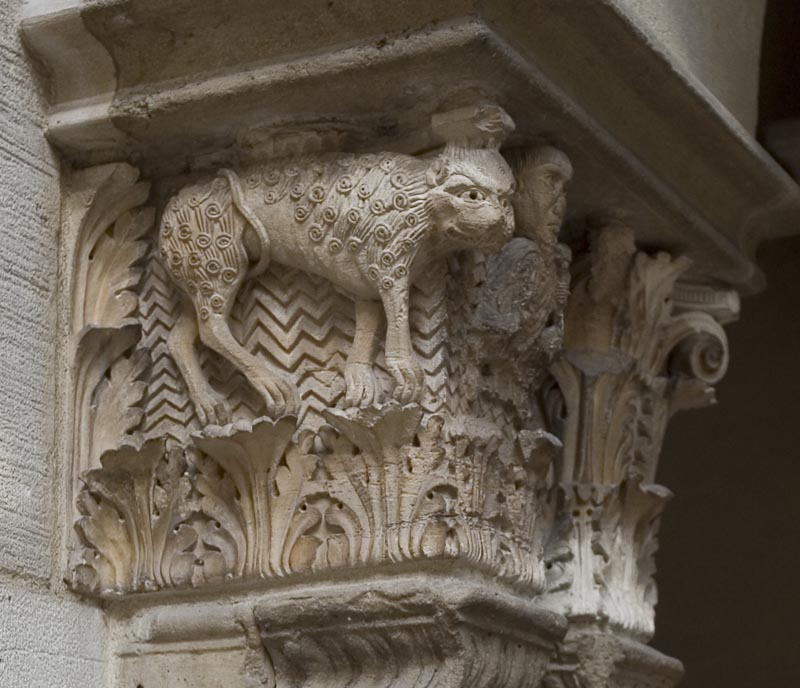
Another interesting set of carvings on a column.
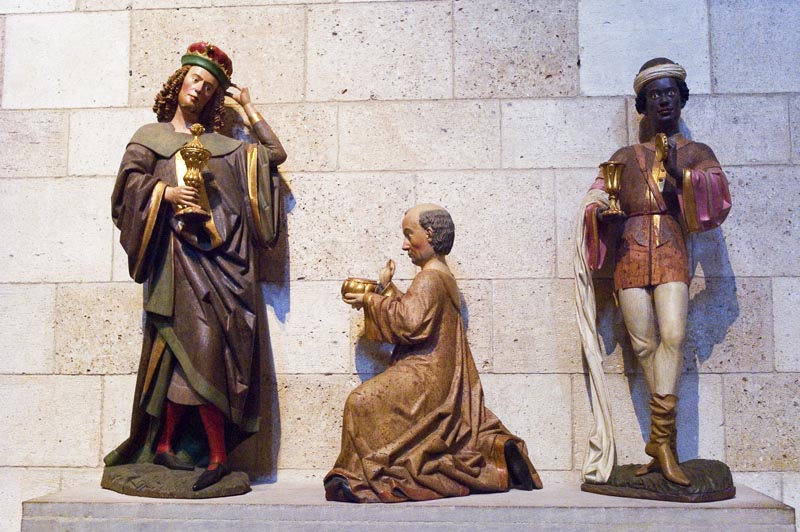
Statuary.
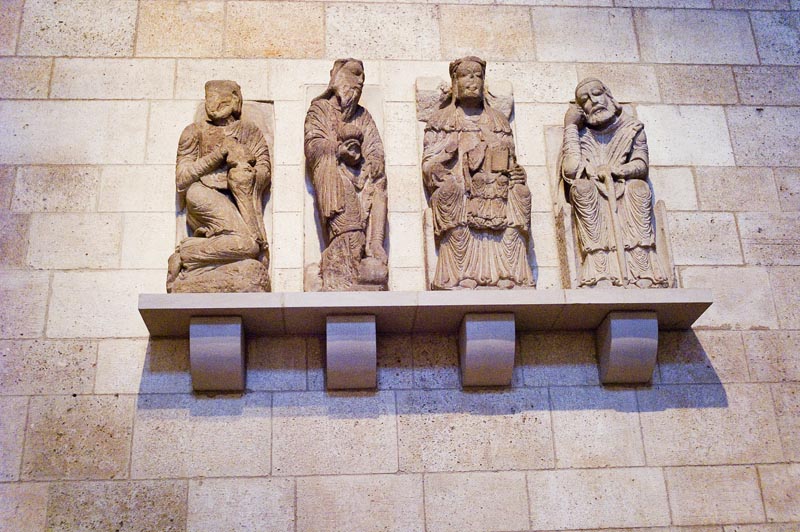
More statuary. A lot of the carvings have been defaced, literally.
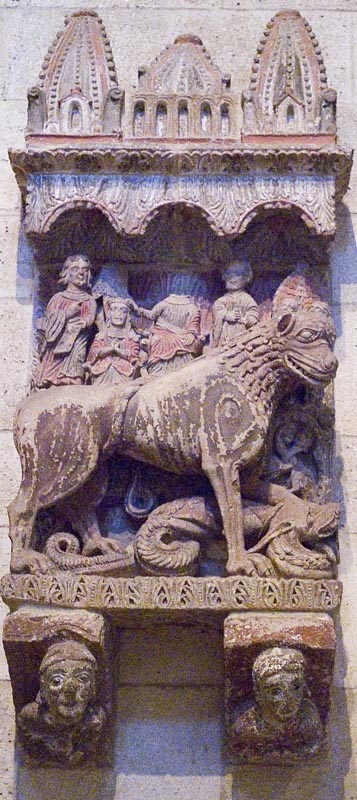
Low light makes non-flash photography interesting. This is a statue of a lion.
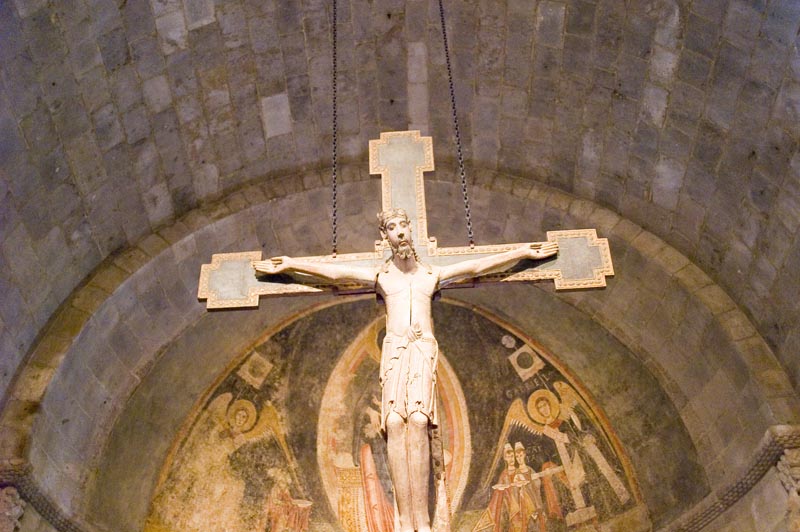
Note the stonework in the ceiling.
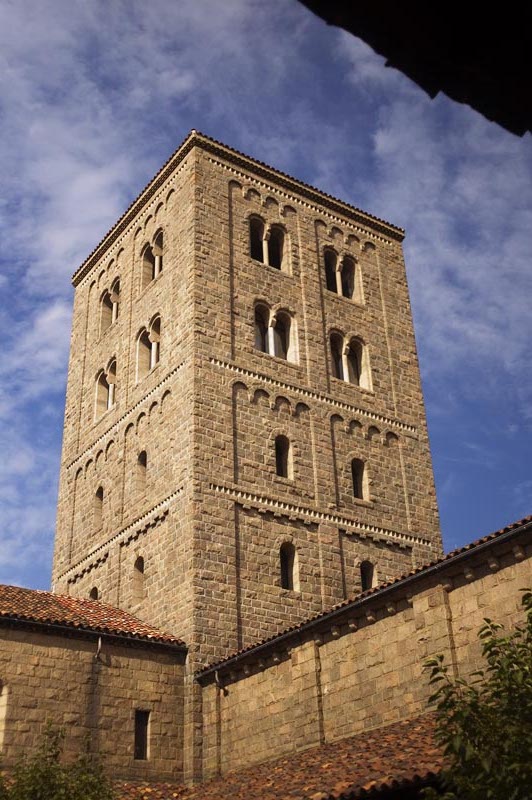
A view of the main tower from the courtyard.
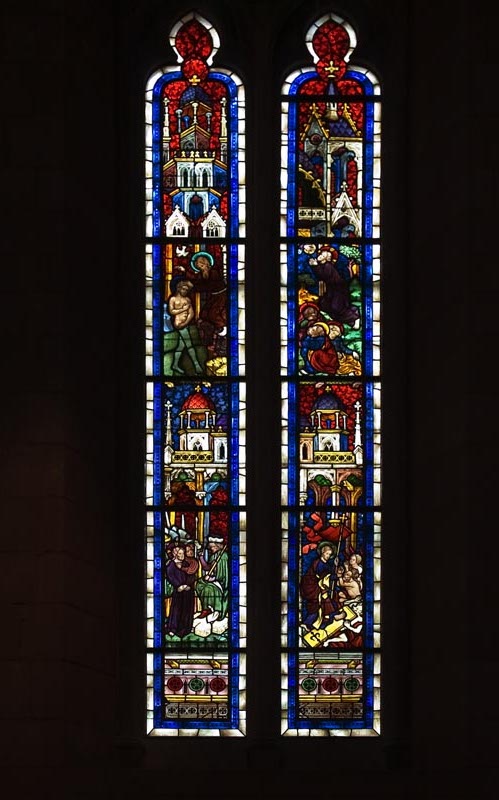
They had some pretty nice stained glass there. Stained glass is always a challenge to photograph.
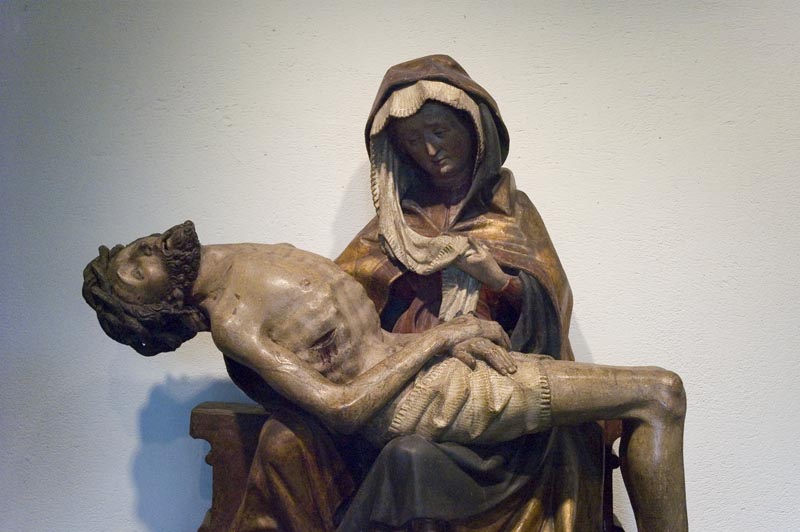
More detailed statuary.
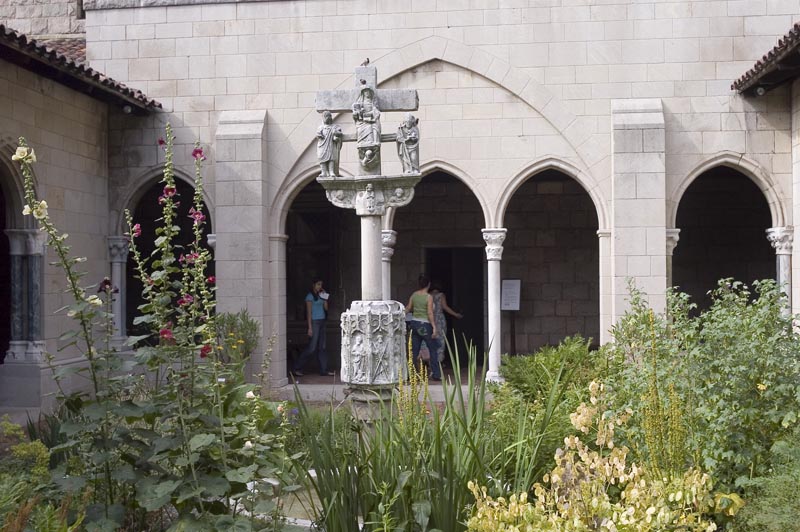
One of the courtyards.
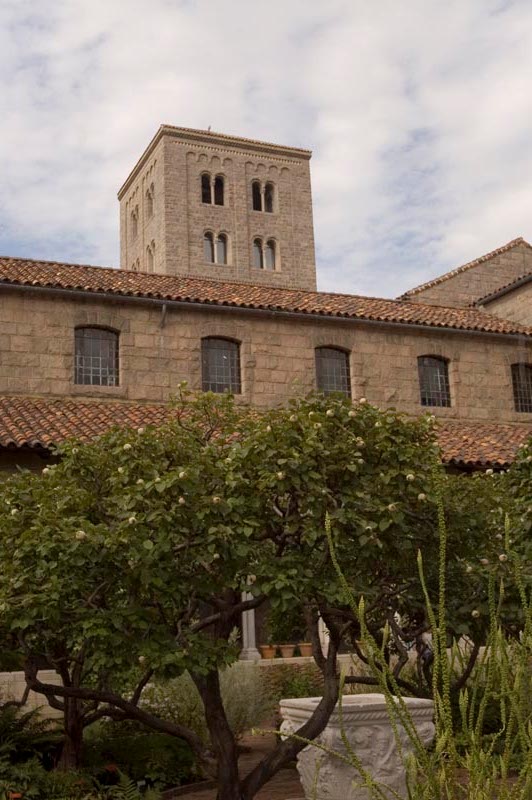
Another view of the tower from a different courtyard. Note the odd plants.
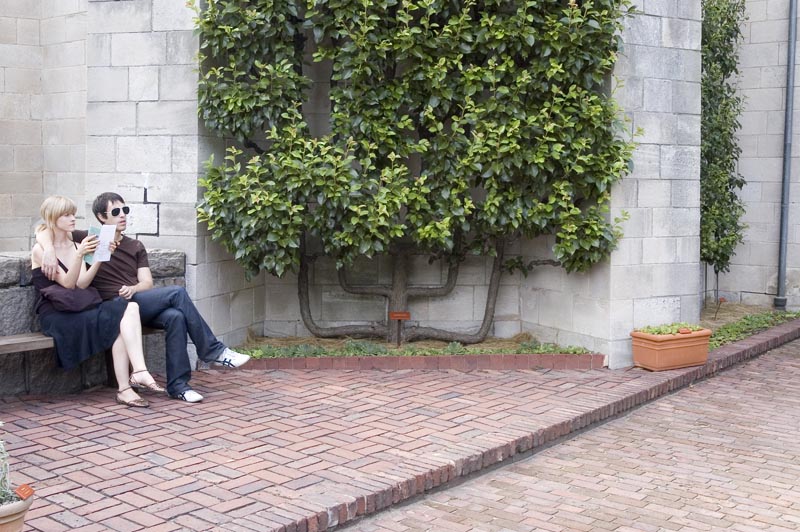
Another odd plant. Note the grooming of the branches of this one.
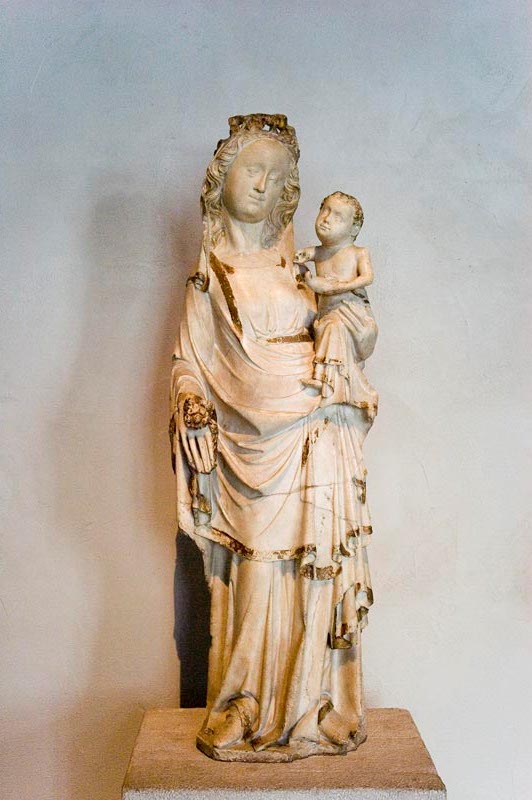 .
.
More well preserved statuary.
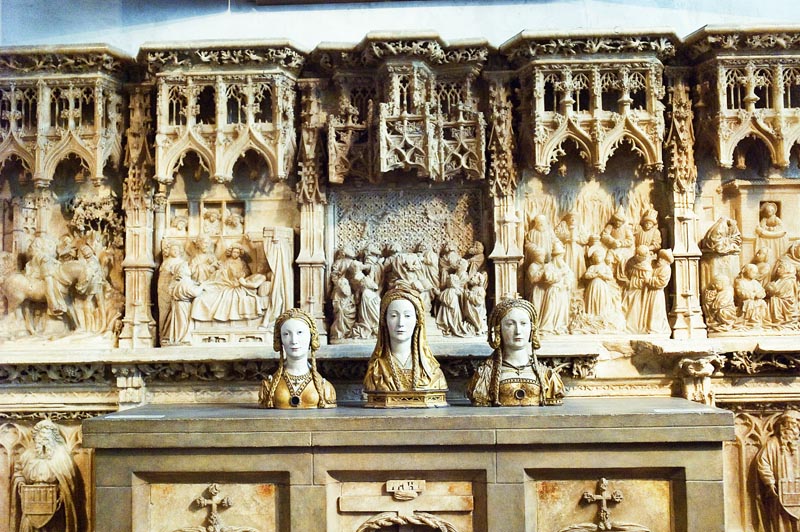
A super intricate carving in stone.
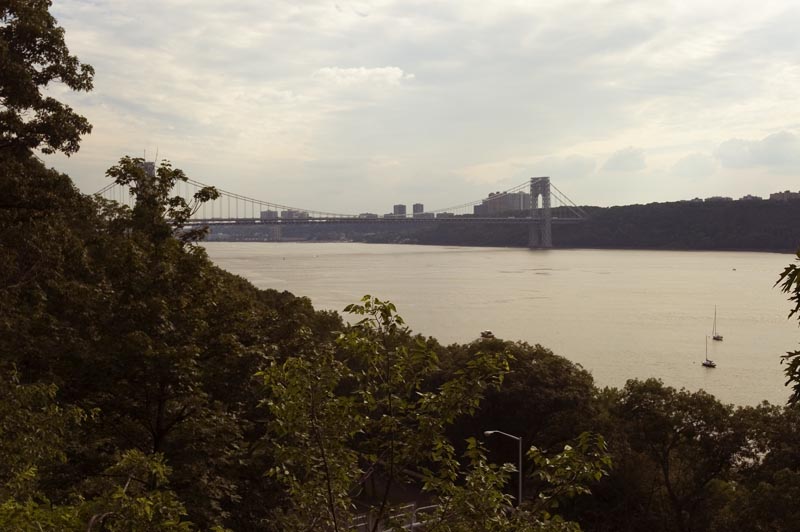
A view of the George Washington Bridge.
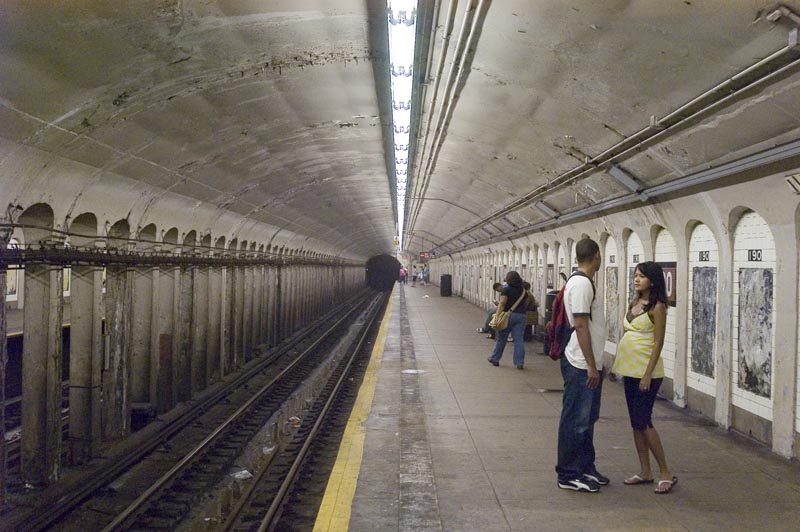
Yet another subway station. This is 190th street.
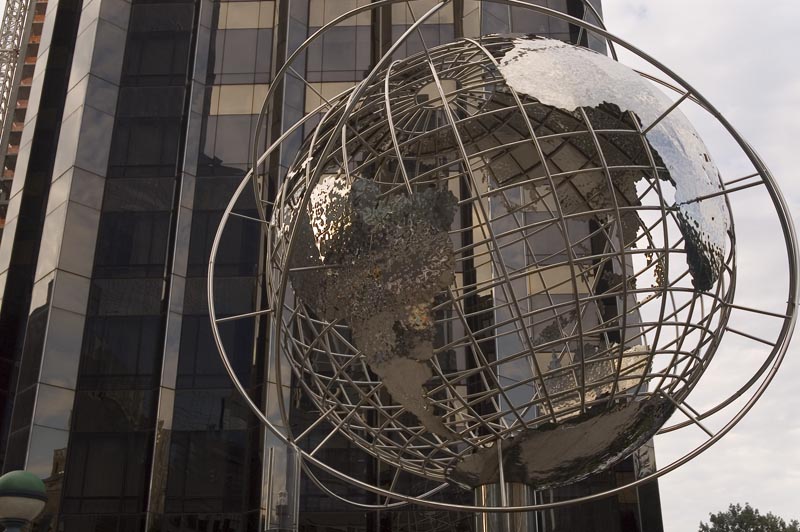
The globe at Columbus Circle.
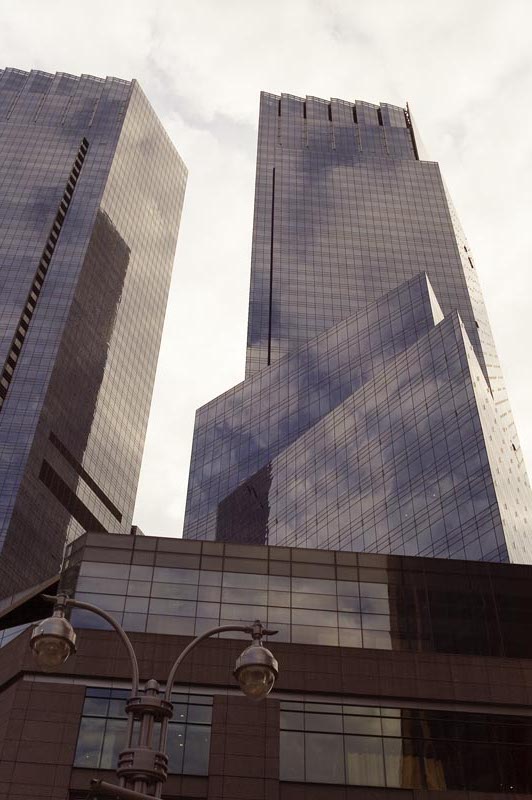
Time Warner Center at Columbus Circle.
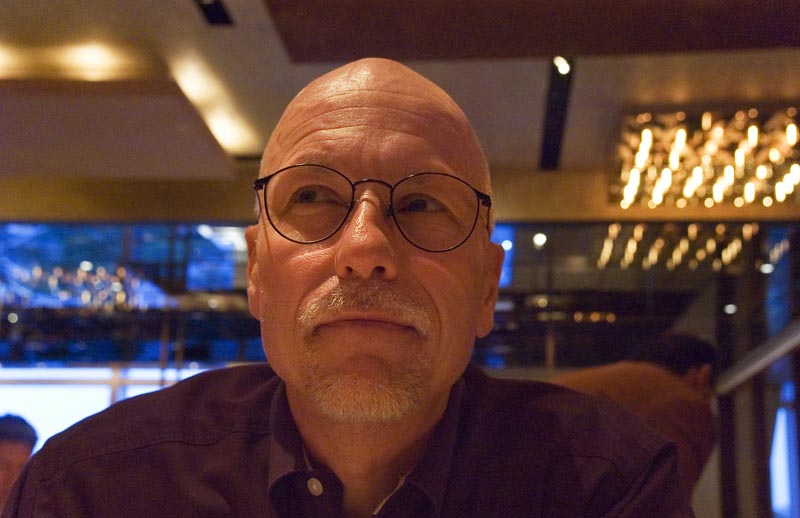
Long exposure photo of the author in Cafe Gray. See link for more details and a menu. It was a great dinner and the place was packed.
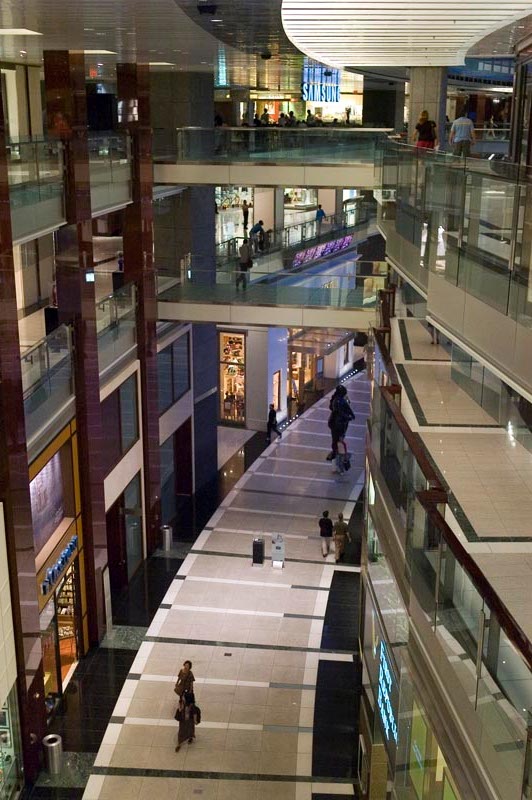
The interior of the Time Warner Center at 10 Columbus Circle. In addition to office space, this is a 4 story shopping mall.
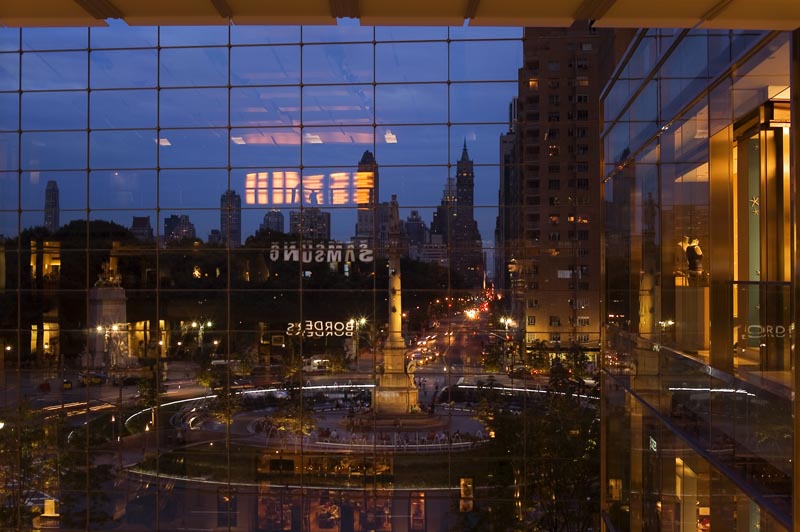
This is a view out the window onto Columbus Circle. Due to the slow shutter speed, the headlights left trails. This is from the center of the shopping area looking east along the south side of Central Park.
Yet another great time in Manhattan. The dinner at Cafe Gray was excellent, if a bit pricey.